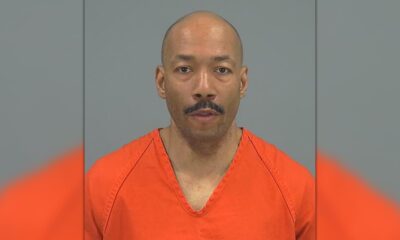Politics
Newsom gets hilarious reality check after turning to public for new state coin design
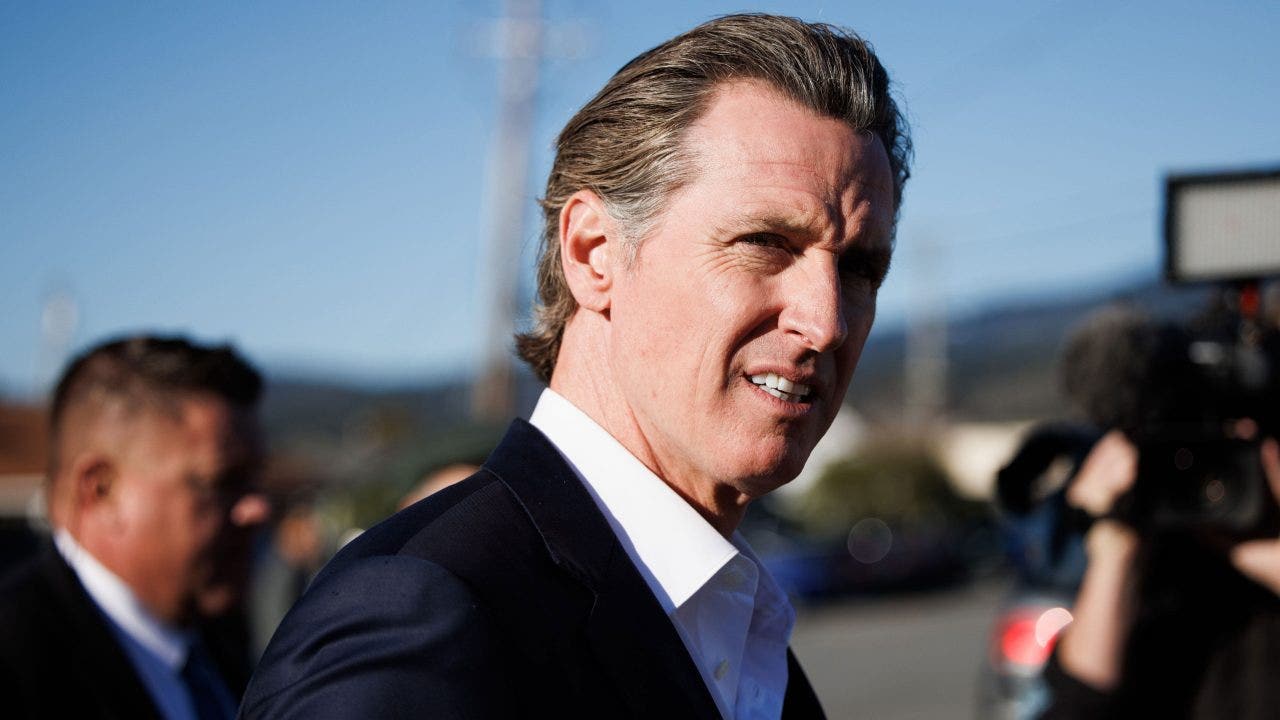
California Gov. Gavin Newsom, on Thursday, asked for the public’s help in designing a new $1 coin that honors innovation that came from the state, though many of the responses pointed to anything but positive accomplishments the state was once proudly known for.
When people think of innovation out of California, they think of things like Silicon Valley and the tech boom as well leading the way for wildlife conservation.
But lately, businesses have been fleeing the blue state because of its failure to address crime, homelessness, and the escalating cost of living.
NEWSOM IGNORNING CALIFORNIA CRISES TO PROMOTE HIMSELF IN PRO-ABORTION CAMPAIGN, GOP LAWMAKERS SAY
California Gov. Gavin Newsom, D-Calif., recently signed a law regulating additives used in popular foods in California. (MediaNews Group/East Bay Times via Getty Images)
Newsom and the state legislature have been harshly criticized over his failure to address the state’s $73 billion budget deficit, with some pointing toward overspending as the problem.
Others are growing frustrated with the governor for things like pointing his attention toward a national pro-abortion campaign instead of issues directly affecting his own state – things like an insurance crisis, affordability crisis, rising crime, wildfire risks, and skyrocketing electric costs.
Continuing with his failure to focus on the problems affecting his own state, Newsom took time on Thursday to get input from his constituents regarding a state coin.
WILL SUPREME COURT RECOGNIZE RIGHT FOR HOMELESS TO CAMP IN PUBLIC?
“Calling all members of the Tortured Coin Designers Department,” Newsom wrote on social media. “CA is getting its own $1 coin to honor innovation, slated to be issued in 2026 – and we need your help! What is a CA innovation you’d like to see featured on the coin? Send ideas to: coinsubmissions@gov.ca.gov.”
The constituents did not hold back on providing the governor with ideas that they thought seemed fitting for the state’s new $1 coin.
Jim Stanley, the press secretary for the State Assembly Republicans, sent his ideas to Newsom with a letter shared by the California Globe, highlighting the governor’s accomplishments while in office.
CALIFORNIA CRIME REFORM GETS ‘UNHEARD OF’ SUPPORT FROM DAS, SMALL BUSINESSES, PROGRESSIVE MAYORS
“Under your bold leadership, California has developed a truly unrivaled method of incinerating money,” Stanley wrote in the letter. “While most people would think it impossible to spend $24 billion on homelessness only to see the problem grow rapidly, you have proved the naysayers wrong.”
Stanley then provided his suggestions, which depicted homeless encampments and fire.
“I think these capture things nicely,” Stanley wrote on X.
PROGRESSIVE CALIFORNIA MAYORS BACK EFFORT TO AMEND CRIME LAWS AMID ‘RAMPANT’ DRUGS AND THEFT
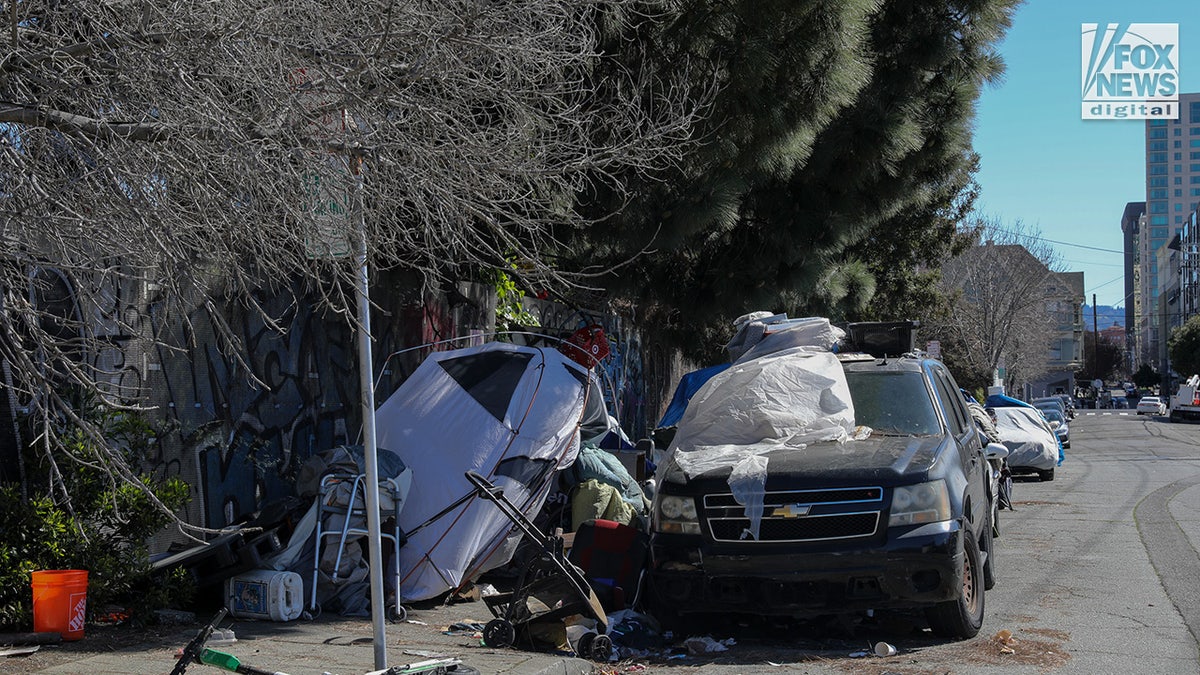
Homeless encampments line the streets in Oakland, California on Friday, March 15, 2024. The city remains plagued by homelessness as nearby businesses close their doors due to safety concerns. (DWS for Fox News Digital)
One user superimposed Harvey Weinstein’s picture into the coin template provided by Newsom, saying, “When people think of California they think of Hollywood. This would be great. (Hope it doesn’t leave a bad taste in your mouth).”
Another user pointed to many of the problems California is faced with, telling the governor, “A coin contest seems totally out of touch and ridiculous.” The same user suggested Newsom contact Florida Gov. Ron DeSantis for how to run a successful state.
NEWSOM SENDING 120 CALIFORNIA HIGHWAY PATROL OFFICERS TO OAKLAND TO CRACK DOWN ON ‘ALARMING’ CRIME SURGE
More suggestions for putting a homeless encampment on the coin were suggested on X, while another suggestion included a coin with the state of California, electric batteries, and a mask symbolizing the governor’s handling of the COVID-19 pandemic. At the bottom of the coin, it reads, “In Newsom we trust.”
Other users suggested placing illegal immigrants on the coin, high gas prices, or someone using drugs.
Newsom’s office did not immediately respond to Fox News Digital’s request for comment on his request for coin ideas.
Jamie Joseph of Fox News Digital contributed to this report.

Politics
London mayor urges foreign leaders to condemn Trump as racist, sexist, homophobic

London Mayor Sadiq Khan branded former President Trump a racist, a sexist and a homophobe as he urged his own Labour Party to do more to “call him out.”
Ahead of the presidential election in November, the U.K.’s Labour Party appears to be working to strengthen its relationship with Republicans should Trump take back the White House. However, Khan, a fierce Trump critic, insists the party “shouldn’t be literally rolling out a red carpet for a state visit.”
Khan’s remarks on the former president came after foreign affairs chief David Lammy appeared to extend an olive branch earlier this month while insisting Trump is “often misunderstood” when it comes to policy and “wants Europeans to do more to ensure a better defended Europe.”
LONDON MAYOR UNDER FIRE FOR REPORTEDLY SNUBBING QUEEN STATUE IN FAVOR OF ART CELEBRATING TRANS PROSTITUTES
Former President Trump, left, and London Mayor Sadiq Khan (Getty Images)
Rejecting Lammy’s position, Khan told Politico, “I’m quite clear, I understand, on Trump. He’s a racist. He’s a sexist. He’s a homophobe. And it’s very important, particularly when you’ve got a special relationship, that you treat them as a best mate.
“If my best mate was a racist, or a sexist or a homophobe, I’d call him out, and I’d explain to him why those views are wrong,” the London mayor added.
MAYOR SADIQ KHAN RIDICULED FOR BLAMING CELL PHONES WHEN CHALLENGED ON KNIFE CRIMES IN LONDON
Khan, who was recently re-elected to a third term leading Great Britain’s most populous city, told the outlet he worries “about a Donald Trump presidency.”
“You know, I’ve been speaking to governors from America. I’ve been speaking to mayors from America. Of course, we’ll have a relationship, whoever the president is. But we shouldn’t be literally rolling out a red carpet for a state visit,” he said.
“It’s really important that we, of course, have good relations with Democrats and Republicans. But I lost count of the amount of Republicans I’ve spoken to who are also worried about a Trump presidency.”
Khan and Trump have a history of feuding and not seeing eye to eye on a number of topics, including immigration.
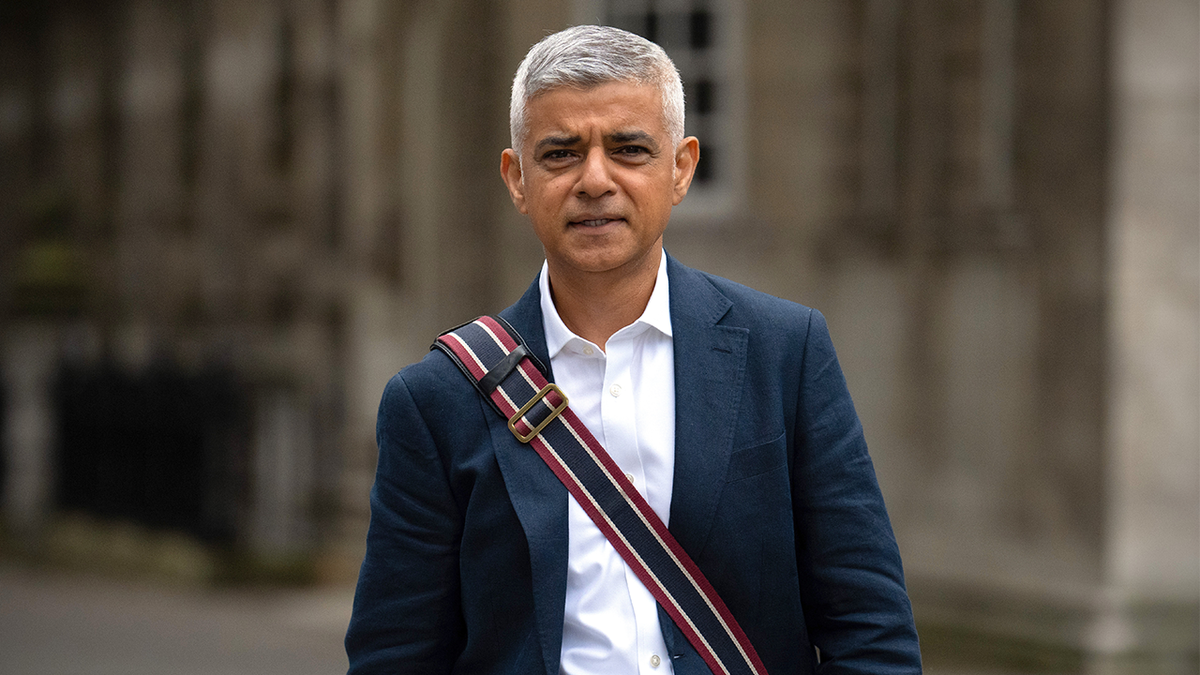
London Mayor Sadiq Khan leaves Millbank Studios after conducting media interviews Aug. 29, 2023, in London. (Carl Court/Getty Images)
In 2019, prior to his arrival in London for a state visit, Trump referred to Khan as a “stone cold loser” who is “very dumb.”
Responding to those comments in his interview with Politico, Khan said: “I’ve got more latitude as a mayor to just to say what I feel about Trump, and I make this point. He called me a ‘stone cold loser.’ I’ve won three. How many has he won?”
Khan’s remarks come as the Labour Party is expected to return to power after 14 years in a U.K. general election that will take place in the coming months.
Lammy, who has criticized Trump in the past as a “neo-Nazi-sympathizing sociopath,” recently traveled to Washington, D.C., where he met with a number of Democrats and several Trump allies, including Ohio GOP Sen. JD Vance and South Carolina GOP Sen. Lindsey Graham.
“Were his words in office shocking? Yes, they were,” Lammy told Politico of the former president. “Would we have used them? No. But U.S. spending on European defense actually grew under President Trump, as did the defense spending of the wider alliance during his tenure.”
Lammy also argued Trump helped matters by pushing European nations to increase their own defense spending.

Foreign affairs chief David Lammy said earlier this month Trump is “often misunderstood” when it comes to policy. (Anthony Devlin/Bloomberg via Getty Images)
“When he began his campaign, only four countries were spending their 2% of GDP. The number was 10 by the time he left office. And it is 18 today.” Lammy added.
The Associated Press contributed to this report.
Politics
Opinion: The Supreme Court's conservatives onstage, unplugged, unrepentant
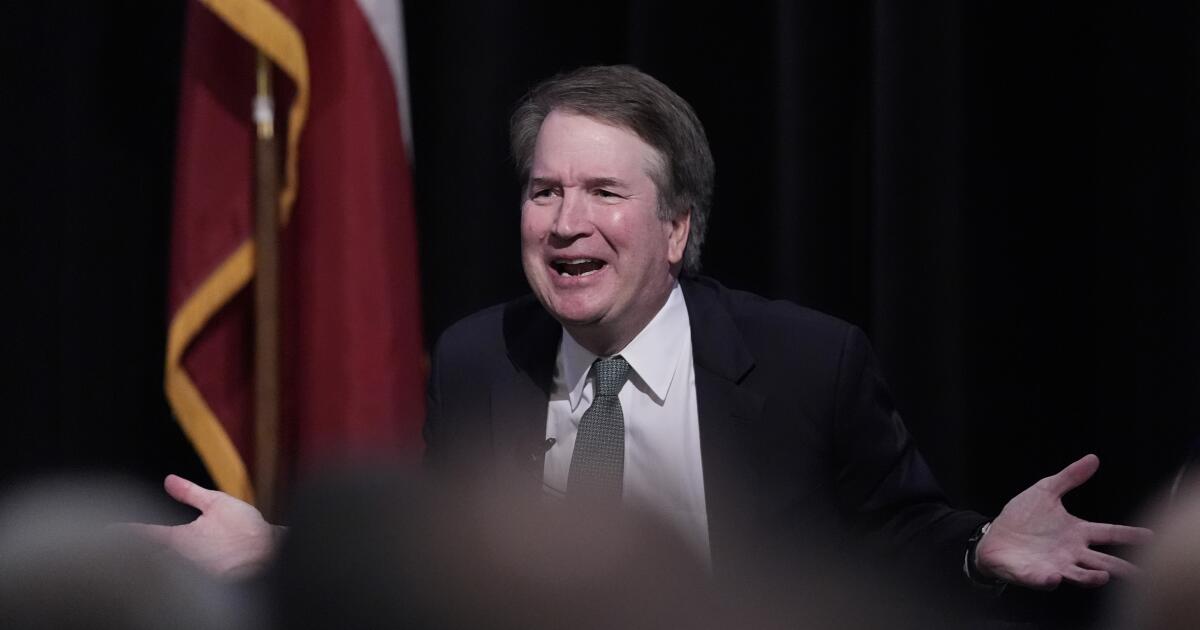
It’s that time of year when the life-tenured denizens of America’s imperial court, otherwise known as the Supreme Court, come down from their bench to mix with the masses.
Just kidding. The justices limit their appearances to friendly audiences, to elite folks too well-mannered to ask them about matters like gifts from billionaires with business before the court or misleading confirmation testimony to the Senate.
With oral arguments for this term’s cases ended in late April, the justices are now writing the decisions that will trickle out through June, including on whether to withhold gun rights from domestic abusers; limit access to mifepristone, the pill used for two-thirds of abortions; gut federal agencies’ regulatory power; and immunize Donald Trump from criminal prosecution. Amid their opinion-writing, they accept a few invitations to speak, cracking a window into their thinking as well as their gripes.
Opinion Columnist
Jackie Calmes
Jackie Calmes brings a critical eye to the national political scene. She has decades of experience covering the White House and Congress.
Four of the court’s six-member conservative supermajority were on the stump in recent days. Justices Clarence Thomas and Brett M. Kavanaugh spoke to groups of lawyers and judges in the congenial South. Samuel A. Alito Jr., one of the court’s six Catholics, was commencement speaker at “passionately Catholic” Franciscan University of Steubenville, in Ohio. And Chief Justice John G. Roberts Jr. gave a purposely anodyne address to a Washington-based judicial group.
The other three were more interesting. Kavanaugh defensively suggested that the unpopular court’s unpopular decisions — ending a half-century of abortion rights, for example — would be seen more favorably with time. Thomas whined to a sympathetic crowd about “the nastiness and lies” in the news media about himself and his would-be insurrectionist wife, Ginni; much of that coverage recently won a Pulitzer Prize for ProPublica. And Alito enjoyed a standing ovation when he was introduced as the author of the 2022 Dobbs antiabortion ruling, despite overwhelming opposition to it nationwide.
Kavanaugh spoke Friday in Austin, Texas. The city is a progressive oasis in the red state, but Kavanaugh appeared before judges, attorneys and court officials connected with the most conservative of the federal appeals courts, the U.S. 5th Circuit Court of Appeals, covering Texas, Louisiana and Mississippi. At a time when the Supreme Court is polling at record lows on job approval and public trust, Kavanaugh was appropriately asked during a question-and-answer session how to boost confidence in the judiciary.
He didn’t seem to see the problem. Instead Kavanaugh blithely compared the current Roberts court — which has greatly expanded rights for gun owners, police and corporations, limited those for voters, consumers and women, and eroded the wall between church and state — to the court of the 1950s and 1960s led by Chief Justice Earl Warren, whose landmark rulings desegregated public schools, expanded voting and other civil rights, ended mandatory Christian prayer in schools and established new rights for criminal defendants.
The Warren court’s decisions were “unpopular basically from start to finish,” Kavanaugh said. And yet “a lot of them are landmarks now that we accept as parts of the fabric of America.”
He’s right about the Warren court legacy. But Kavanaugh is kidding himself if he thinks that Dobbs and other decisions that he has backed will eventually gain widespread favor. The Warren court is remembered for expanding individuals’ constitutional rights; the Roberts court, in overturning Roe, is the first to take one away. (Kavanaugh’s support for Dobbs provoked Republican Sen. Susan Collins of Maine, the decisive vote for his confirmation, to complain that he’d “misled” her during the Senate’s consideration of his nomination.)
Thomas spoke the same day at a conference of the conservative U.S. 11th Circuit Court of Appeals, covering Georgia, Florida and Alabama. His most noteworthy remarks reflected the Roberts court’s other legacy: ethical indifference. The event was held at a luxury resort on Alabama’s Gulf Coast, appropriate given Thomas’ affinity for such places, which has been well documented by ProPublica and other media. Republican donor and billionaire Harlan Crow provided Thomas with yacht trips, real estate deals and other benefits.
Also appropriately, Thomas was with his wife, Ginni, who not only shared the largesse but also is central to Thomas’ other ethical transgression. She worked behind the scenes to overturn Joe Biden’s 2020 election, yet Thomas has refused to recuse himself from three cases before the court dealing with Jan. 6 and Trump’s role in conniving to stay in power.
To hear Thomas tell it, the problem isn’t his conflicts of interest but the critics and we journalists who report on him. “Especially in Washington, people pride themselves in being awful,” he said.
And that’s why he and Ginni like RV-ing across the country to see “regular people.” Thomas didn’t mention that an investigation by the New York Times found that his luxury 40-foot motor home was underwritten by another rich pal.
Alito, another billionaire’s beneficiary, received an honorary degree in Christian ethics on Saturday at Franciscan University. Like Thomas, he groused about his critics; fittingly, he quoted Rodney “I don’t get no respect” Dangerfield. Alito has become known for fussing that Christian conservatives get no respect, even as he and other conservative Catholics dominate the court. Free exercise of religion is “a disfavored right,” he’s carped in the past, and “you can’t say that marriage is a union between one man and one woman.”
In that spirit, Alito warned the Franciscan grads, “When you venture out into the world, you may find yourself in a job or a community or a social setting when you will be pressured to endorse ideas you don’t believe or to abandon core beliefs. It will be up to you to stand firm.”
God knows he does. And so do Thomas and Kavanaugh. The rest of us, the masses, are worse off for their supreme myopia.
Politics
Youngkin vetoes slew of Virginia bills, including contraception access measure

Virginia Gov. Glenn Youngkin vetoed several bills late Friday from the final batch of the year’s regular legislative session, including legislation that focuses on protecting access to contraceptives, as well as a measure that would have allowed small businesses to host skill games, which are similar to slot machines.
The vetoes came after Youngkin, a Republican, first proposed amendments that the legislature rejected. In a nighttime statement, he said he was willing to keep working with the Democratic-controlled General Assembly on the issues but was vetoing measures that were “not ready to become law.”
In total, Youngkin signed seven bills into law and vetoed 48, including the Right to Contraception Act, which was approved by the Democrat-controlled Virginia Senate and House of Delegates.
“I support access to contraception. However, we cannot trample on the religious freedoms of Virginians,” Younkin said in a statement, adding that access to contraception is already protected under the Constitution.
PROTECTION OF CONTRACEPTION ACCESS ADVANCES IN VIRGINIA LEGISLATURE
Virginia Gov. Glenn Youngkin vetoed several bills late Friday from the final batch of the year’s regular legislative session, including legislation that focuses on protecting access to contraceptives, as well as a measure that would have allowed small businesses to host skill games, which are similar to slot machines. (AP Photo/Steve HelbeR)
The bill defined contraception, prevented any restrictions and established enforcement by civil penalty, according to WRC-TV. Instead of signing the bill. Youngkin already sent back a substitute measure that was not a new law but a policy statement that Virginians have a right to access contraception under current Supreme Court precedents. But his motion expired, and the original bill was sent back to the governor, which he then vetoed.
“Quality health care for women is essential and contraception remains a crucial component of reducing abortions and fostering a culture of life, making Virginia the best place to raise a family. As the issue continues to be deliberated by the Legislature, and recognizing the diverse religious, ethical, and moral beliefs of Virginians, any contraception-related changes must be coupled with robust conscience clause protections for providers and also must uphold the fundamental right of parents to make decisions concerning their children’s upbringing and care.”

Close-up of a woman’s hand holding birth control pills. (iStock)
He said that the measure created an “overly broad cause of action against political subdivisions and parents, as well as medical professionals acting in their expert judgment and within their scope of practice.”
VIRGINIA DEMS ADVANCE BILL THROUGH SENATE TO PROVIDE TAXPAYER-BACKED HEALTH INSURANCE TO ILLEGAL IMMIGRANTS
Younkin also said the bill fails to include adequate conscience clause protections for providers and also undermines the fundamental right of parents to make decisions concerning their children’s upbringing and care.
Democrats criticized the veto, with state party chair Susan Swecker saying in a statement, “Youngkin just proved to Virginians that once again, he does not care about their health or rights.”
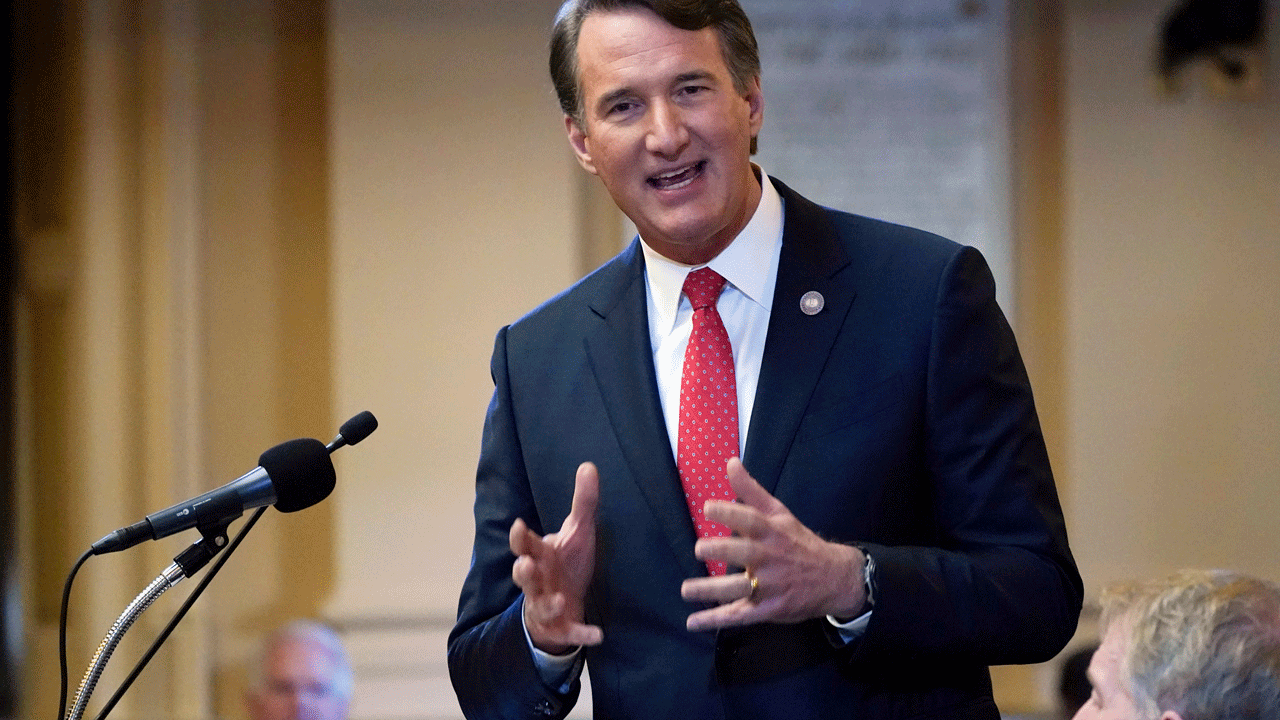
In total, Youngkin signed seven bills into law and vetoed 48.
Youngkin’s veto of the skill games measure, one of the year’s most contentious issues, was widely expected. The governor sought to overhaul the bill that was sent to him, but the Legislature overwhelmingly rejected his changes. Youngkin wanted a higher tax rate and far stricter limits on where the machines could be located, carving out a 35-mile radius around any casino, racetrack or gambling “satellite facility” where they would have been banned.
The governor also vetoed a measure that would have eliminated both a recordation and a property tax exemption for the United Daughters of the Confederacy, the Richmond-based women’s group that helped erect many of the country’s Confederate monuments. Proponents have argued that the group’s priorities were out of line with 21st century values.
The Associated Press contributed to this report.
-

 Education1 week ago
Education1 week agoVideo: Police Use Pepper Spray on Protesters on G.W.U.’s Campus
-

 Politics1 week ago
Politics1 week agoOhio AG defends letter warning 'woke' masked anti-Israel protesters they face prison time: 'We have a society'
-

 Finance1 week ago
Finance1 week agoSpring Finance Forum 2024: CRE Financiers Eye Signs of Recovery
-

 Politics1 week ago
Politics1 week agoBiden’s decision to pull Israel weapons shipment kept quiet until after Holocaust remembrance address: report
-

 World7 days ago
World7 days agoIndia Lok Sabha election 2024 Phase 4: Who votes and what’s at stake?
-

 News1 week ago
News1 week agoThe Major Supreme Court Cases of 2024
-

 News1 week ago
News1 week agoTornadoes tear through the southeastern U.S. as storms leave 3 dead
-

 World1 week ago
World1 week agoA look at Chinese investment within Hungary


